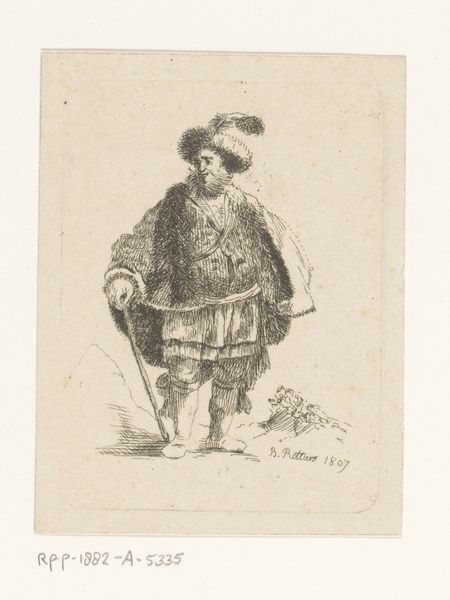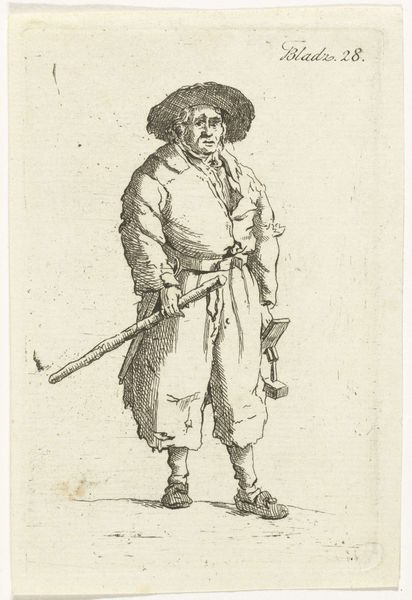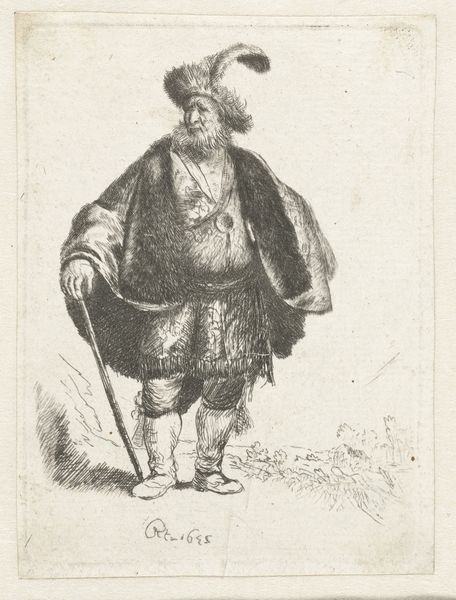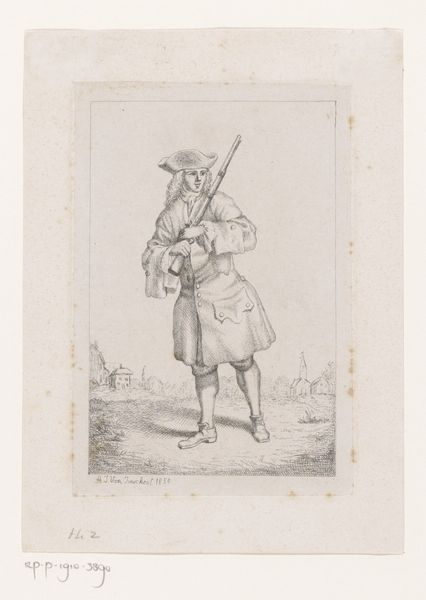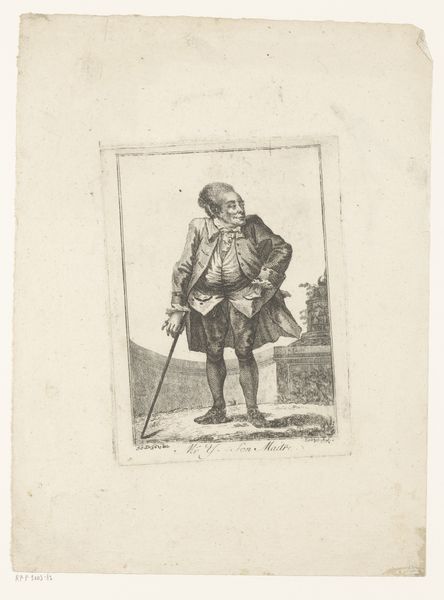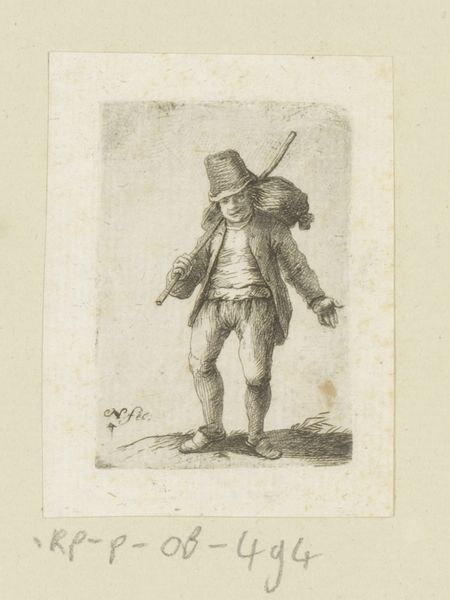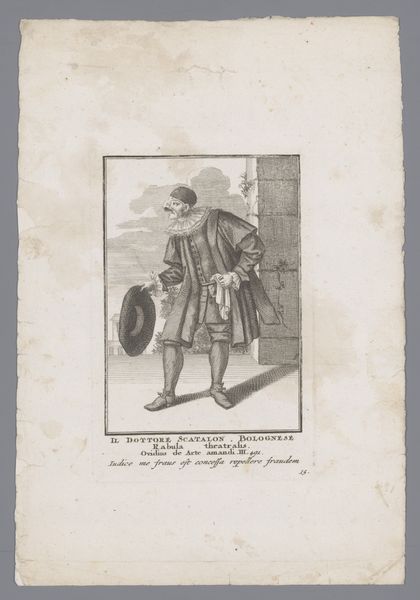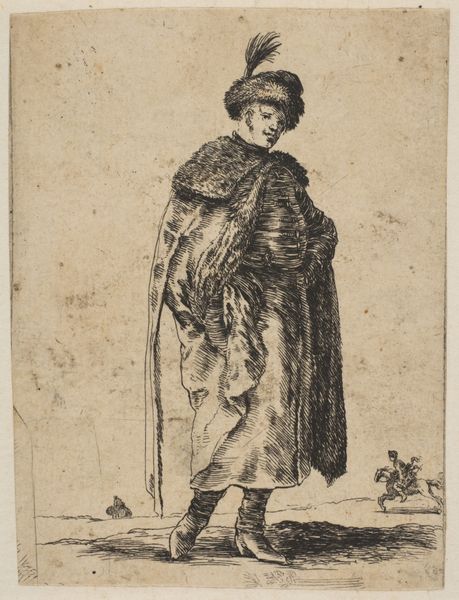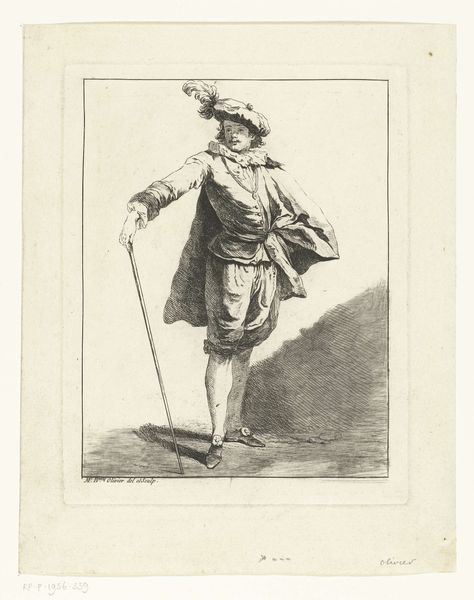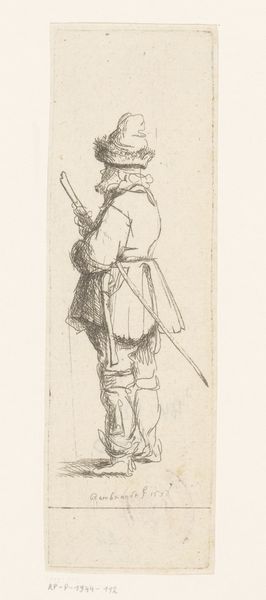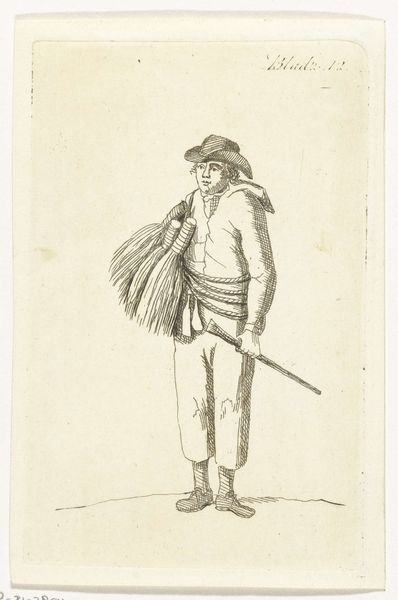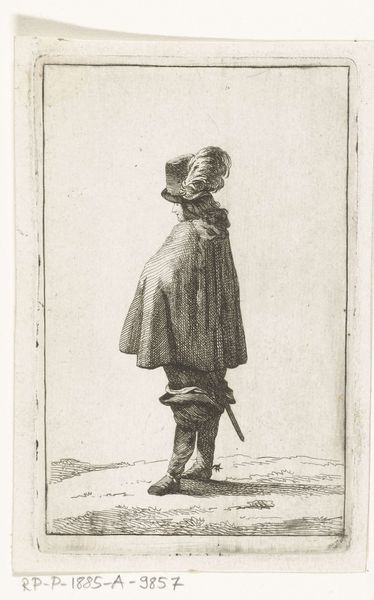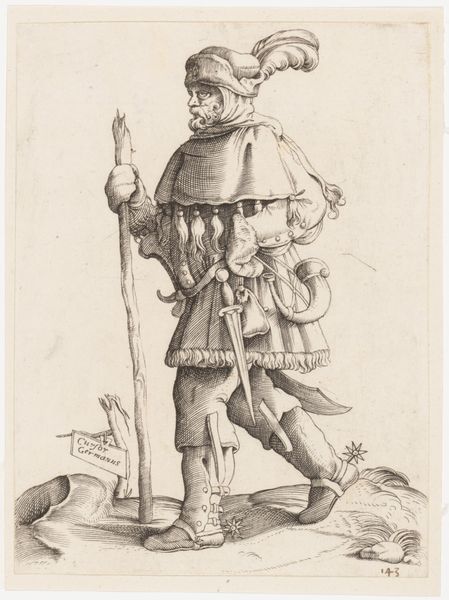
Dimensions: height 44 mm, width 31 mm
Copyright: Public Domain
Curator: Looking at this intriguing engraving from 1781, “The Small Bagpiper” by Jean-Pierre Norblin de la Gourdaine, I'm struck by the simple, almost austere, characterization. What's your immediate reaction? Editor: My first thought is about the print itself: it's a humble format. Look at the textures—the grain of the paper and the crispness of the lines speak of its material existence as something made with skilled labor, likely for a wider audience. Not some grand commission. Curator: Precisely. Norblin’s focus, it seems, wasn't to aggrandize, but rather to document a social type. Bagpipes, of course, were a common folk instrument. Note how the figure isn’t idealized. It gives us a raw slice of daily life. Editor: The bagpiper’s clothing is so simply rendered! The lines of the engraving highlight the cloth's texture, drawing attention to the means of production. Those simple garments have social implications that can be read through his place in the socio-economic hierarchy. Curator: Good eye. Consider, though, the recurring symbolism of the bagpipes themselves. In various cultural traditions, music, and instruments connect to notions of celebration, community, but also perhaps even a call to arms, resistance, memory. I'm compelled to think that beyond just a document, Norblin imbued meaning into his rendering of this piper. Editor: Symbolism is intriguing, yes. I lean towards analyzing the conditions of the production of art in that era and the audience. Printmaking made images and knowledge mobile, consumable. His intent was shaped by how this image could be used and consumed as much as a reflection of symbols that can be applied to the figure's depiction. Curator: I find it hard to deny, still, the cultural memory this little etching encapsulates. A fleeting street performance captured—perhaps the same tune passed down through generations. Editor: Perhaps. But its existence as an object to be circulated changes how those narratives form, creating another layer that intersects both maker, image, and receiver. It reminds me that materiality and means shape more than symbols. Curator: Fair point. An exchange between object and cultural force perhaps. Editor: Exactly. In looking closer at the piper we begin to uncover a lot.
Comments
minneapolisinstituteofart almost 2 years ago
⋮
Jean-Pierre Norblin de la Gourdaine was a French painter and printmaker active in Poland in the late 18th century. Norblin's charming miniature etchings, representing mostly male heads, street sellers, and vagabonds, reflect both in subject and technique the profound influence of Rembrandt's prints. Norblin was also drawn to Polish subjects, capturing the unfamiliar, exotic world around him in his depictions of men with colossal fur hats and curled moustaches, Cossacks, and Polish historical figures.
Join the conversation
Join millions of artists and users on Artera today and experience the ultimate creative platform.
